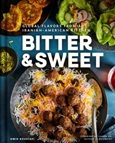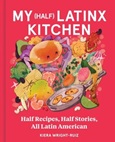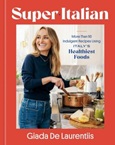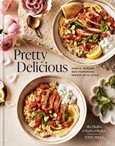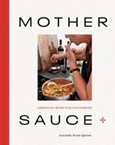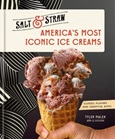Last Updated: June 16, 2025
Bitter & Sweet: Global Flavors From an Iranian-American Kitchen
by Omid Roustaei
Infused with moving stories, useful cooking tips, and gorgeous photographs, Bitter & Sweet teaches readers to experiment not only with Iranian dishes but also with the many cuisines and techniques that Omid has explored throughout his career. His welcoming prose and down-to-earth methods are sure to engage both practiced hands and total newcomers to the kitchen.
My (Half) Latinx Kitchen: Half Recipes, Half Stories, All Latin American
by Kiera Wright-Ruiz
This cookbook is the story of Kiera’s journey to embrace her identity and all her cultures: Latinx, Asian, and American.
Super-Italian: More Than 110 Indulgent Recipes Using Italy’s Healthiest Foods
by Giada De Laurentiis
Choosing ingredients that promote wellness is the starting point not just to better meals, but to better health and longevity. A diet rich in a variety of nutrients can make a world of difference in how you look and feel. And this is where this cookbook comes in. Every single recipe in this book will include the vitamins and minerals our bodies need to stay strong and function properly.
Pretty Delicious: Simple, Modern Middle Eastern, Served With Style
by Alia and Radwa Elkaffas
The debut cookbook from social media sensations The Food Dolls, with more than 110 simply sophisticated, fresh, and vibrant dishes with a Mediterranean twist. And since serving with style is what The Food Dolls perhaps love the most, they also share an entire chapter of menus and inspired ideas to zhush up the dinner table, with 120 beautifully styled photos throughout.
Mother Sauce: Italian American Family Recipes and the Story of the Women Who Created Them
by Lucinda Scala Quinn
In her latest book, home cook and author Lucinda Scala Quinn cooks 100 iconic Italian-American recipes. Along the way, she shares the origins of the recipes and gives credit to the incredible women who developed our cherished Italian dishes.
America’s Most Iconic Ice Creams: Classic Flavors & Creative Riffs
by Tyler Malek and JJ Goode
The creative flavor geniuses at Salt & Straw, the wildly successful small-batch ice cream brand, go normie with the absolute best versions of classic American flavors…and zillions of ways to riff, twist, and spin them into outrageous new scoops.

